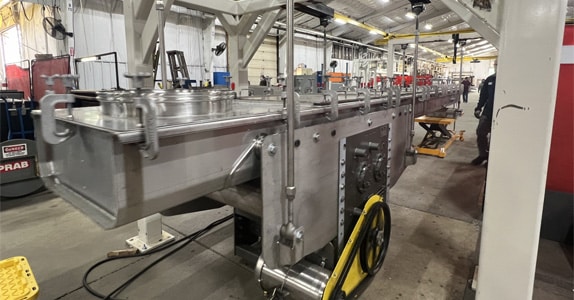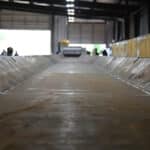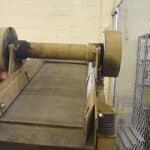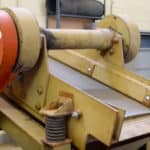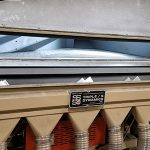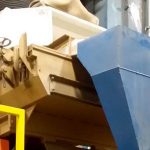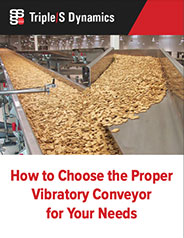The Conveyor Price Puzzle – with a Little ROI on the Side
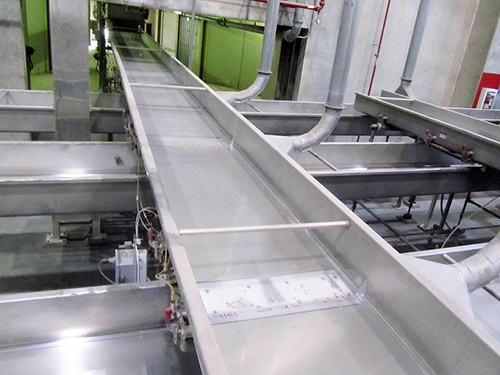
Horizontal motion conveyors replaced horizontal bucket elevators and reduced maintenance costs for a food manufacturer.
We are guilty of it. We have published articles, infographics, and ads, and given talks about Total Cost of Ownership (TCO) and Return on Investment (ROI). Break out the charts and graphs! We used the definitions in our ads:
ROI – A performance measure used to evaluate the savings and/or revenue increase credited to the equipment after initial and ongoing costs are considered TCO – A performance measure meant to uncover all the lifetime costs associated with the equipment both before and after it is purchased.
Since we have been thinking about this a lot, we thought we would share a new approach. The price of capital equipment is a small piece of the cost puzzle. Okay not new. But we have come up with several things to consider before you select that new conveyor.
First, mine your data. We want you to start with what you have already spent. You cannot get to ROI without knowing your TCO. Do you know the real cost of operating and maintaining what you have currently? Can you reuse what you have? Is it safe? Do not be fooled by, “I’m not worried about those costs because they come out of maintenance budget, not the capital equipment budget.” All of what you spend matters. Right to the bottom line. Sometimes this mining of the data opens up things you have thought about before.
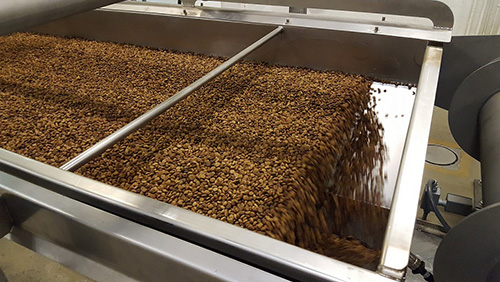
Horizontal motion conveyors replaced belt conveyors to provide a cleaner and safer solution for this pet food maker.
An aggregate products company operated years with many ‘enclosed’ belt conveyors. While they did not spill and leak too much in the beginning, as bearings and rollers failed, the covers were not reinstalled with the same sealed nature. To combat this dust generation, more aspiration was gradually added, along with personnel, to sweep and clean. Being a hazardous-to-breathe product, this was expensive and not practically achievable without replacing the units in a much shorter typical lifespan. Adding all this maintenance and extra dust collection easily rebalanced the consideration from the cheapest capital option, to the option that does not have as many failure points. Being easier to keep sealed and less reason to get inside the product zone kept the plant cleaner and healthier for decades proving this is the cheaper TCO and, ultimately, the best ROI — although it took mining some existing plant data to realize. It’s not just about the initial purchase price.
Cost
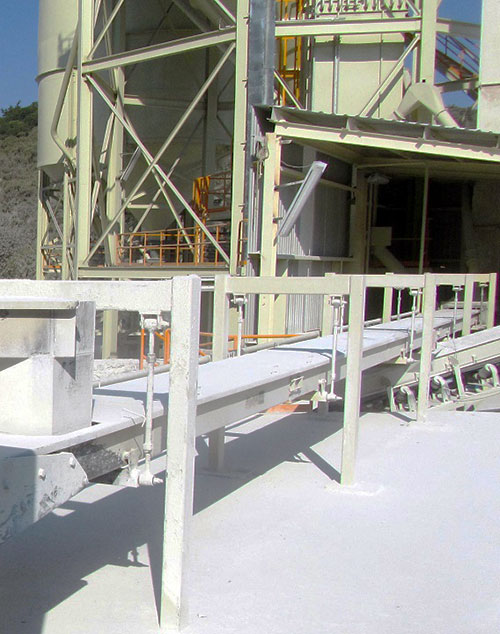
Horizontal motion conveyors moving quicklime.
What is the cost? And we are not talking about the cost of the new equipment. Say for instance, if you know you were going to replace a belt, spring, or bearing every month from now to eternity, would you still make that purchase? Do you know what the equipment you now have has cost you? Here are some categories to consider.
- Installation costs
- Engineering costs
- Shipping cost
- Energy costs
- Maintenance
- Spare parts
- Controls
- Downtime
- Unscheduled maintenance
- Cleaning/spillage/waste
- Training
- Operating costs
- Labor
Go back and look at three years or five years. This, along with the purchase price, is really what this conveyor cost you. If you do not have access to all of those categories above, just pick the ones you do have. You should be able to pull together maintenance, installation, spares – try to know how much your current system has cost you.
Next, consider your current system’s reliability. Would you buy a new truck because it had great speakers, a 9-in. navigation screen, and Wi-Fi, without regard for the reliability of the manufacturer? A back-up camera over engine reliability? If that truck broke down once a week every month, how long would it take you to call it a “lemon”? There is a good possibility that reliability, or the lack thereof, has led you to start looking for something new. Do you actually know how many hours of production time were lost over the last few years? It is hard to put a price on reliability when you don’t know what the unreliability cost you. Again, know how much you have spent.
A customer came to us looking to solve its maintenance budget woes. The horizontal bucket elevators it had been using forever cost the company tens of thousands each year to keep running. But it wasn’t until they went back and looked at the real dollars spent did they decide to look for alternatives.
Adaptability/Sustainability
Consider adaptability/sustainability. This can mean many different things to different people. Think about your process. Can you get parts when you need them? Can you afford to stock what you need? Again, back to what you have spent on your current conveyors. Go back and look. What happens if your production line changes; will the conveyor you have fit? Can it be modified to fit or can you use it somewhere else in the line? Does it end up in your used equipment inventory? A baked goods company needed to upgrade a packaging line to roll out a new product. Using numerous conveyors on the existing line, with modifications like extending length, adding gates, moving drive positions, allowed this producer to accomplish this upgrade without breaking their budget or adding equipment to their scrap pile.
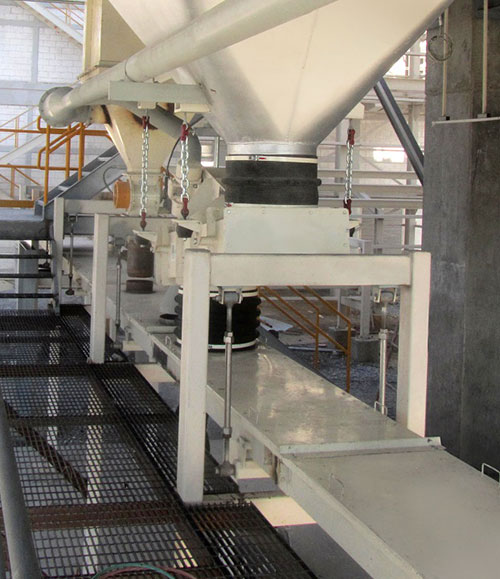
Horizontal motion conveyors replaced belt conveyors for a more dust free environment.
Safety
Safety is another critical factor to be considered when selecting a new conveyor and can have a dramatic impact on the initial cost, depending upon the conveyor type and the level of protection required. Safety guards are necessary to protect the operators and the type of guarding required needs to be thoroughly reviewed for each application. A simple vibratory conveyor with no gates would require little if any guarding, whereas a typical belt conveyor will require guarding at the head and tail pulleys and all the return rollers to guard the pinch points.
Fixed guards are lower in cost, but they limit cleaning access, can become collection points for dust, fines, and spilled product, which will build up over time and may lead to mechanical failures or potential sanitation issues. Removable guards provide easier cleaning access, but they are more expensive and require additional downtime to remove and reinstall when cleaning the conveyor. Removable guards must also be equipped with safety sensors to ensure they are replaced prior to restarting the conveyor. Light curtains are another guarding option used to prevent accidental access to equipment where potential safety hazards exist and they can take the place of fixed or removable guards.
A pet food company had problems using belt conveyors to move its product through the plant. Not only was there a cleaning issue, product on the floor and guards filling up with product, it became a safety issue as well. While the cleaning/sanitation issue was a pain, it was the safety issue that forced them to look at alternative methods of conveying.
Conclusion
The best investment in capital equipment does not always give priority to the points made above. Short production cycles or functionality not critical to any particular specification – these are a couple of instances where the initial price is the decision driver, not long-term total cost. Just be careful that the decision is not simply the most convenient cloaked in price justification. We would like to convince ourselves that a new pickup every two years with the latest features is justified because it is reliable. Similar to the newest edition of a mobile personal device that has tremendous capability but will/can/should you pay to use every new one that presents itself? True good investment with the highest ROI lasts for years and pays for years.
Tim Talberg is product manager – sanitary equipment at Triple/S Dynamics, Dallas. Triple/S Dynamics is celebrating its 130th year of providing mechanical conveying, screening, and separating equipment to the processing industries. For more information, contact Talberg at [email protected], call or visit www.sssdynamics.com.


